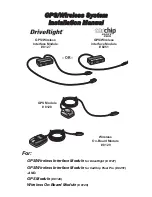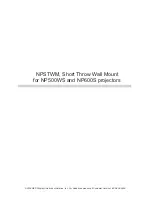
4
Nodal Ninja 3 MK3 Operating Manual
v.1.1
Copyright © 2020 Nodal Ninja
Introduction
Panoramic photography, for our purpose of this manual, is better defined as
capturing multiple adjoining images and stitching them together with the
use of third-party software to form a single seamless higher resolution
composite.
There are various types of panoramic
photography one of which is creating
a full 360°x180° spherical image.
These types of images are easy and
fun to shoot and produce. Wide-angle
lenses such as the Sigma 8mm when
used with full-frame DSLR’s are
capable of capturing a full 360°x180°
spherical image in as little as 4 shots.
Some field workflows can be shot in
seconds and post-production
completed within minutes.
Another type of panoramic
photography is multi-row/multi-column composite/mosaic shooting in
rows and columns. The resulting image becomes an extremely detailed
and high-resolution composite.
The Nodal Ninja 3 ‒ NN3 ‒ series heads can also act as a free movement
gimbal head, giving added use and flexibility.
While the market is currently dominated with lower-cost one-shot solutions,
there is no substitution for quality output when using DSLR, Micro-Four-
Thirds, or even compact cameras. Our heads allow the photographer to
adjust a camera/lens precisely over its horizontal and vertical axis points
(called the entrance pupil, aka Nodal Point). This eliminates parallax error
when shooting multiple images side by side. Without parallax, a
photographer can seamlessly stitch multiple photographs together,
forming a larger, higher resolution composite image.
The Nodal Ninja 3 series heads are a great entry-level solution for those
wanting higher quality panoramas.
”Panoramic photography is a technique of photography,
using specialized equipment or software, that captures images with
horizontally elongated fields of view. It is sometimes known as wide
format photography.”





































